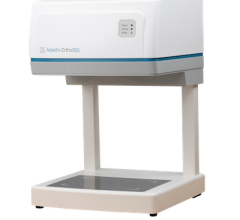
Greg Freiherr has reported on developments in radiology since 1983. He runs the consulting service, The Freiherr Group.
What To Do About The Draper Effect

Image courtesy of Pixabay.
Images shown at trade shows tend to be, well … perfect. The kVP is adjusted precisely in computed tomography (CT); the ultrasound probe is set for optimal penetration and clarity; magnetic resonance imaging (MRI) protocols are tuned like a Stradivarius. Some of the subjects have to border on anorexia, especially the ones used for ultrasound. And, regardless of the modality or the time needed, the data are processed well beyond the average.
And the results show the care taken. They are the radiological expression of what Mad Men fans might call the Don Draper effect — that button-down, crisp white shirt, tie straight and shoes shined to a gloss perfection.
In Seinfeldese, the images are spectacular — but not real. And everyone who’s been around a show floor or two knows it. This raises the question of whether the equipment and the modalities they represent are the best choices for routine cases. It’s a question not easily answered.
Draper Images and Value Medicine
What we can say is that Draper images may not work well with value medicine. And that may be a good thing. Nothing undoes a technology or, by extension, a product, like disappointment. And disappointment is sure to happen, if practitioners expect to get these pristine beautiful images when scanning the everyman and everywoman, especially when efficiency and effectiveness are at premiums.
Consider the following: Americans tend to be heavier than the subjects whose innards appear in Draper images. Seldom are techs of the same caliber as the ones that produce those near-perfect images. And the time to process them just isn’t there in a busy workday.
So how do vendors bridge this rift between the way they have traditionally positioned their products and the coming change in the practice of medicine? It won’t be easy. And, more than likely, Draper images will be around for a long time. But their influence might wane.
What could diminish the widespread allure of Draper images at trade shows might be the recognition that practical issues are going to become increasingly important. So, regardless of what companies display at trade shows — regardless of how good the images are on tricked-out machines taking images of ideal subjects with protocols that generate data that are processed to perfection — what will become increasingly important will be what sites can produce under real-life conditions.
What an epiphany it would be for booth visitors to be presented with images produced in a routine setting on real patients (images with patient identification appropriately deleted, of course) by personnel who would typically do the scans. Not the best of the best — not specially trained techs who can turn to a vendor-supplied engineer to produce radiological Renoirs. But realistic presentations that might foster credibility by accurately illustrating the capabilities of a piece of equipment, while at the same time demonstrating the pathologies this equipment might be used to visualize.
Auld Lang Syne
Long — long — gone are the days when radiologists could return from a trade show and demand of a hospital administrator the purchase of a specific product. Chief technology officers and other chief executive officers (CXOs) today hold that kind of power. But often CXOs turn to those in the trenches of healthcare when making their decisions.
Faced with realistic illustrations, administrators might see what is possible under real conditions with specific equipment, compare this to what they know and what they need, and return to report their conclusions to the C suite. Might radiologists do the same, influencing not only purchase decisions but, through their relationships with referring physicians and an appreciation for authentic equipment performance, the exams that are ordered?
Admittedly, this might be asking a lot. Draper images are sewn into the fabric of radiology since forever. And they are likely to remain so, especially when high-end systems are shown for the first time. For these new products, which often are tested only selectively, it may be impossible to describe their use in routine conditions, much less obtain images produced under routine conditions.
A Draper-less approach to promotion, however, might be applied to other products in a vendor portfolio, ones that have been around for a while. Trade booths are notoriously tight on space and vendors must pick and choose the equipment they bring to a show. Equipment that does make the cut might be excellent candidates for mini-reality shows — panels bearing still and video images, accompanied by text, that illustrate what different types of equipment can do under realistic circumstances, as well as the people who make those images.
In the years ahead, practical issues are going to determine what sells. Value medicine will impact how equipment is used.
It is all but certain that vendors will continue showing the best images possible, especially to buttress new product launches. But maybe those Draper images could be accompanied by ones made using other equipment, whose performance under everyday conditions can be described and the results shown with images that have real-world value.
Authenticity … what a concept.
Editor's note: This is the second blog in a four-part series on patient centricity. The first blog, “Value Medicine: Radiology’s Big Chance,” can be found here.


 November 25, 2025
November 25, 2025 









